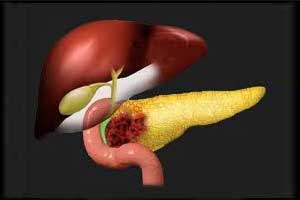- Home
- Editorial
- News
- Practice Guidelines
- Anesthesiology Guidelines
- Cancer Guidelines
- Cardiac Sciences Guidelines
- Critical Care Guidelines
- Dentistry Guidelines
- Dermatology Guidelines
- Diabetes and Endo Guidelines
- Diagnostics Guidelines
- ENT Guidelines
- Featured Practice Guidelines
- Gastroenterology Guidelines
- Geriatrics Guidelines
- Medicine Guidelines
- Nephrology Guidelines
- Neurosciences Guidelines
- Obs and Gynae Guidelines
- Ophthalmology Guidelines
- Orthopaedics Guidelines
- Paediatrics Guidelines
- Psychiatry Guidelines
- Pulmonology Guidelines
- Radiology Guidelines
- Surgery Guidelines
- Urology Guidelines
MRE good for diagnosing and monitoring treatment of autoimmune pancreatitis

Magnetic resonance elastography, MRE is a good modality for diagnosing and monitoring treatment of autoimmune pancreatitis, finds a new study.
Magnetic resonance elastography (MRE) shows promise as a quantitative imaging method for differentiating autoimmune pancreatitis (AIP) from pancreatic ductal adenocarcinoma (PDAC) and for monitoring the treatment response in AIP, according to a new study published in the European Journal of Radiology.
Yang Hong, Department of Neurosurgery, Shengjing Hospital, China Medical University, Shenyang, China, and colleagues conducted the study to assess the value of MRE in patients with AIP and in the differentiation of autoimmune pancreatitis,AIP from PDAC.
Autoimmune pancreatitis (AIP) often manifests as a mass lesion causing obstructive jaundice, clinically mimicking pancreatic carcinoma. It can be cured with immunosuppressant drugs, in contrast to other benign chronic pancreatic diseases, thus the differentiation of AIP from pancreatic cancer is of particular interest in clinical practice. There is the possibility that some patients with AIP may develop pancreatic cancer, and this possibility contributes to increasing our difficulties in differentiating AIP from pancreatic cancer.
This prospective study included 14 AIP patients, 26 PDAC patients, and 14 healthy volunteers. All participants underwent pancreatic MRE (40-Hz; 3 T scanner) at enrollment, and 7 AIP patients underwent a second MRE after initiation of steroid therapy. Pancreatic stiffness values were obtained by MRE and a new logistic regression model (the calculated Rad score) was used to combine pancreatic stiffness and the distribution and shape of high-stiffness areas for differentiation of AIP and PDAC. The area under the curve (AUC) was calculated for all parameters using receiver operating characteristic (ROC) analysis.
Also Read: Diagnosis and management of Pancreatic Carcinoma – New Standard Treatment Guidelines
Key Findings:
- Pancreatic stiffness was significantly higher (2.67 kPa [interquartile range, 2.24 to 3.56 kPa]) in AIP than in healthy pancreas (1.24 kPa [1.18 to 1.24 kPa]) and significantly lower in AIP than in PDAC (3.78 kPa [3.22 to 5.11 kPa]; both P < 0.05).
- Diffuse (n = 4 vs 1; P = 0.043) and multiple (n = 3 vs 0; P = 0.037) lesions were more common in AIP, while solitary (n = 25 vs 7; P = 0.001) and nodular lesions (n = 18 vs 2; P = 0.002) were more frequent in PDAC.
- Rad scores outperformed individual imaging parameters in distinguishing AIP from PDAC (AUC, 0.948 vs 0.607 to 0.782; all P < 0.05), with 84.6% specificity and 92.9% sensitivity.
- Pancreatic stiffness in AIP decreased significantly, from 2.66 kPa [2.29 to 3.05 kPa] to 1.55 kPa [1.43 to 1.67 kPa] (P = 0.016), during treatment.
"Our findings from the present study suggested that pancreatic stiffness was significantly higher in AIP than in healthy pancreas and significantly lower in AIP than in PDAC. Data reported that MRE displays promise as a quantitative imaging method for differentiating AIP from PDAC and for monitoring the treatment response in AIP," concluded the authors.

Disclaimer: This site is primarily intended for healthcare professionals. Any content/information on this website does not replace the advice of medical and/or health professionals and should not be construed as medical/diagnostic advice/endorsement or prescription. Use of this site is subject to our terms of use, privacy policy, advertisement policy. © 2020 Minerva Medical Treatment Pvt Ltd